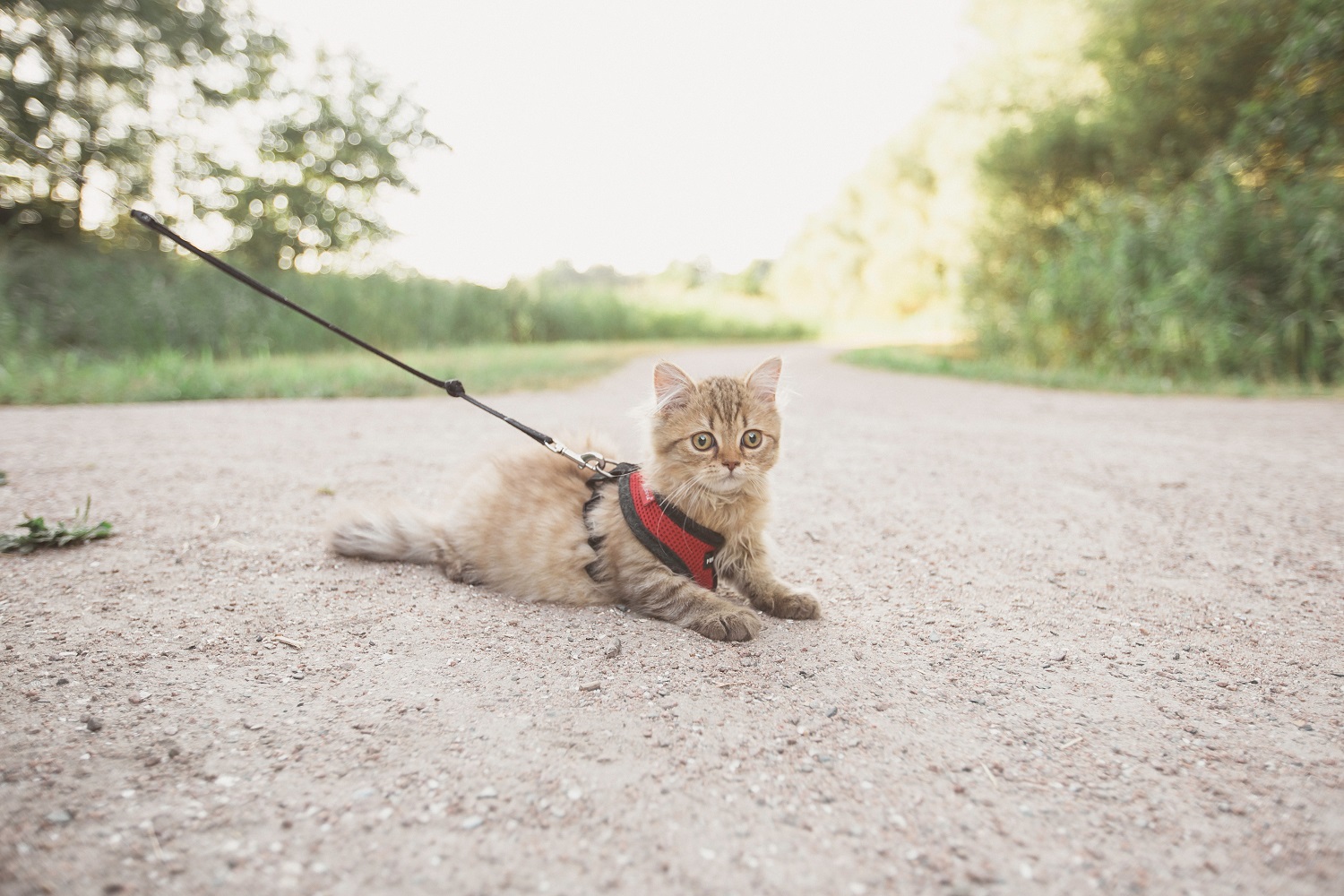If the idea of leash training your kitten sounds like something only internet-famous cats can do, think again. Kittens can absolutely be trained to walk on a leash, and with the right approach, it can be a rewarding way to enrich their world safely.
Not every kitten is born to strut down the sidewalk like a mini panther, but most can learn to enjoy short outdoor adventures if you ease into it with patience, praise, and treats. Whether your goal is to let them sniff the backyard or stroll through the park, leash training is totally possible and actually easier when you start young.
Let’s break down how it works, what you will need, and how to make sure both you and your kitten enjoy the journey.
Why Leash Training a Kitten Is a Good Idea
Most cats stay indoors for their safety, but that does not mean they have to miss out on fresh air and new smells. Leash training gives your kitten a safe way to explore the outside world, burn off energy, and boost their confidence.
Benefits include:
- Physical exercise that helps reduce boredom and zoomies
- Mental stimulation from new sights, smells, and textures
- Stronger bonding between you and your kitten
- Safe access to nature without the risks of free-roaming
You are not trying to turn your kitten into a dog. You are simply tapping into their curiosity in a way that protects them from traffic, predators, and unexpected surprises.
When to Start Leash Training
The best time to begin leash training is when your kitten is between eight and sixteen weeks old. Kittens at this age are more open to new experiences and less set in their ways. That said, older cats can still learn to walk on a leash with enough patience.
Make sure your kitten:
- Is fully vaccinated before going outside
- Has had some basic training indoors, like responding to their name or coming when called
- Feels comfortable wearing a harness in a familiar environment before stepping outside
If you are starting with an adult cat or a more nervous kitten, expect the process to take longer. Every cat moves at their own pace, and forcing it never works out well for either of you.
Choosing the Right Gear
Before you even think about opening the door, you will need the right equipment. This is not a job for a collar and a rope. Cats are master escape artists, so secure and cat-specific gear is essential.
Harness
Look for a soft, adjustable kitten harness that fits snugly without being too tight. It should distribute pressure across the chest and shoulders, not the neck. Test the fit with a finger under each strap. If your kitten can wriggle out of it, size down or adjust accordingly.
Leash
A lightweight cat leash around four to six feet is ideal for training. Avoid retractable leashes at the beginning. They can pull too hard or get tangled while your kitten is still learning.
Treats
Positive reinforcement is key. Use small, soft treats your kitten loves to reward good behavior and build trust during each step of the process.
Step-by-Step Leash Training for Kittens
You are not going to clip on a leash and go for a walk on day one. Leash training is a gradual process. Here is how to make it successful without stressing your kitten or yourself.
1. Introduce the harness indoors
Let your kitten sniff and inspect the harness. Gently place it on them for a few minutes at a time while distracting them with toys or treats. Increase the time as they get used to the feeling.
2. Practice walking inside
Attach the leash and let your kitten drag it around a safe space. Follow them, encourage movement, and keep the sessions short and fun.
3. Try guided walks indoors
Hold the leash and gently guide your kitten around a quiet room. Use treats to encourage them forward. Do not pull or yank. Let them explore at their own pace.
4. Move to a secure outdoor space
Once your kitten is confidently walking indoors, move to a fenced yard, patio, or balcony. Keep the environment calm, and stay close. Watch for signs of stress, and bring them back inside if they seem overwhelmed.
5. Start exploring in short bursts
Gradually increase the length of time and distance during your outings. Stick to quiet areas and always keep your kitten on a short leash until they are comfortable and focused.

Oh, great, another one of your brilliant human ideas. Harnesses? Are you kidding? But I must admit, it does give us a chance to show off our stylish sides. So, I guess we’ll give this “exploring” thing a try, but remember, we’re the ones in control here. And hey, if it means we get to explore the great outdoors and make all the neighborhood cats jealous, we’re in. Just don’t forget the treats, or we might “accidentally” get ourselves tangled in a bush. #WalkingOnTheWildSide #TheKittyIsInCharge #TreatsOrBust #FreeSpirit
Winston & Joey
What to Expect Along the Way
Not all kittens take to leash training instantly. Some will freeze, flop over, or do their best impression of a sad burrito. Others may get distracted, overstimulated, or try to back out of the harness. These reactions are normal.
Stick with it, stay patient, and celebrate small wins like walking a few feet or not chewing the leash. If your kitten absolutely hates the harness or shows signs of fear, slow things down or consult with a vet or cat behaviorist for support.
Safety Tips for Outdoor Adventures
Once your kitten is leash-trained, outdoor walks can be a fun and enriching part of their routine. Just remember a few simple rules to keep things safe:
- Always supervise your kitten closely
- Stay away from loud, busy areas that could cause panic
- Avoid unknown dogs or wildlife
- Check the ground temperature on hot days
- Keep your kitten up to date on vaccines and flea prevention
- Never tie the leash to an object and leave your kitten unattended
Leash walking is not about covering miles. It is about safe, curious exploration. Let your kitten set the pace and focus on the experience rather than the destination.
Final Thoughts: Every Kitten Can Learn with Time and Treats
Training a kitten to walk on a leash may seem ambitious, but it is completely doable with the right mindset. It takes time, trust, and a little bit of trial and error, but the payoff is worth it.
Whether you are strolling through the backyard or sitting quietly on a park bench together, leash walking opens up a world of experiences for your kitten. Plus, it gives you a great excuse to spend more time outside with your tiny explorer.
Just go slow, keep the treats handy, and remember that you are not walking a dog. You are walking a curious, independent, slightly dramatic adventurer who happens to purr.
Sources:
Leash Training a Kitten https://www.petmd.com/cat/behavior/leash-training-kitten
How to Walk Your Cat https://www.humanesociety.org/resources/how-walk-your-cat
Training Cats to Use Harnesses https://vcahospitals.com/know-your-pet/leash-training-your-cat
Introducing Cats to the Outdoors Safely https://www.icatcare.org/advice/taking-your-cat-outdoors-safely
Recent Posts
Your Cat Might Be a Furry Little Healer… or at Least a Fuzzy Alarm System If you’ve ever had your cat suddenly become extra clingy when you’re under the weather, you’re not alone. From...
Cats are experts at hiding things, socks under furniture, their disdain for your playlist, and, unfortunately, symptoms of illness. In the wild, showing weakness could make them a target, so even...


